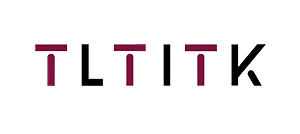Email format error
Email cannot be empty
Email already exists
6-20 characters(letters plus numbers only)
The password is inconsistent
Email format error
Email cannot be empty
Email does not exist
6-20 characters(letters plus numbers only)
The password is inconsistent

News
Here, you can describe a piece of text you want to express

Revolutionizing Education with Interactive Whiteboards: The Future of Classroom Engagement
In recent years, the integration of technology in the classroom has transformed the way educators engage with students. Among the most powerful tools in modern education is the interactive whiteboard (IWB). This digital tool has become an essential part of educational environments, offering numerous benefits to both teachers and students.
What is an Interactive Whiteboard?
An interactive whiteboard is a large, touch-sensitive display that allows users to interact with content directly on the screen. Teachers can write, draw, move objects, and display multimedia content, all of which can be integrated into lessons. IWBs are typically connected to a computer or network, enabling teachers to share information, videos, and documents with the class in real time.
Key Benefits of Interactive Whiteboards
-
Enhanced Student Engagement: Interactive whiteboards captivate students by providing dynamic, hands-on learning experiences. The ability to touch and manipulate content helps students stay engaged and retain information more effectively.
-
Multimedia Integration: Teachers can incorporate videos, audio, and images into lessons, making abstract concepts more tangible and accessible. This multimedia integration supports various learning styles, catering to visual, auditory, and kinesthetic learners.
-
Collaborative Learning: IWBs facilitate collaborative learning by allowing students to interact with the board. They can work together in groups, contribute to discussions, and participate in interactive activities, fostering teamwork and communication skills.
-
Efficiency and Flexibility: With IWBs, lesson planning becomes easier and more efficient. Teachers can save their work, share notes digitally, and adapt lessons in real time. This flexibility allows for a more personalized learning experience.
-
Improved Accessibility: Interactive whiteboards often come with features like zooming, text highlighting, and customizable colors, which are especially beneficial for students with learning disabilities or visual impairments.
Interactive Whiteboards in Different Educational Settings
Interactive whiteboards are not just for traditional classrooms—they are also making their way into remote learning environments. In virtual classrooms, IWBs allow for live annotations, real-time collaboration, and direct interaction between students and teachers, making the learning process more interactive and immersive.
The Future of Interactive Whiteboards
As technology continues to advance, interactive whiteboards will only get smarter. The future may bring even more interactive features, such as AI-powered tools for personalized learning, virtual reality integration, and better collaboration across digital platforms. These innovations will further enhance the educational experience and make learning more engaging and effective.
Conclusion
The interactive whiteboard is changing the way education is delivered, enhancing engagement, collaboration, and efficiency. It represents a significant step forward in integrating technology in the classroom, making learning more interactive, engaging, and adaptable to diverse needs. As technology evolves, the possibilities for interactive whiteboards in education are limitless, paving the way for a new era of teaching and learning.

